Top-notch collaboration tools are critical for remote teams. These remote work tools can make distributed teams more productive.
More than 20% of the workforce could work remotely three to five days a week as effectively as they could if working from an office, according to findings by McKinsey & Company. Their recent analysis of 2,000 tasks and 800 jobs in nine countries indicates that this would translate to three to four times as many people working from home than before the pandemic. In 2023 and beyond, distributed teams will need extraordinary tools for digital adoption, collaboration, productivity, scheduling and meeting.
SEE: Discover what you need to look and sound professional while working remotely.
Feature comparison table of remote collaboration tools
| Software | Calendly | WalkMe | Slack | Google Workspace | Zoom |
|---|---|---|---|---|---|
| Automation | Yes | Yes | Yes | Yes | Requires third-party integration |
| Video and/or audio calls | Requires third-party integration | Yes | Yes | Yes | Yes |
| Team workspaces | No | No | Yes | No | No |
| Calendars | Yes | No | Requires third-party integration | Yes | Requires third-party integration |
| Analytics | Yes | Yes | Yes | Yes | Yes |
| Workflows | Yes | Yes | Yes | Yes | Requires third-party integration |
| Third-party integrations | Yes | Yes | Yes | Yes | Yes |
| Mobile and/or desktop apps | Yes | Yes | Yes | No | Yes |
| Admin management | Yes | Yes | Yes | Yes | Yes |
| Cloud storage | Yes | No | No | Yes | No |
| Notifications and alerts | Yes | Yes | Yes | Yes | Yes |
| Dashboards | Yes | Yes | Yes | Yes | Yes |
| Branding | Yes | Yes | Yes | Yes | Yes |
Calendly: Best for scheduling meetings
Calendly for teams is a web-based scheduling tool that makes it easy for everyone to set meeting times inside and outside their organization. Companies can display their entire company availability or each department’s availability on one page (Figure A). Invitees can schedule a time to meet, which can automatically be assigned to a team member with availability.
Figure A
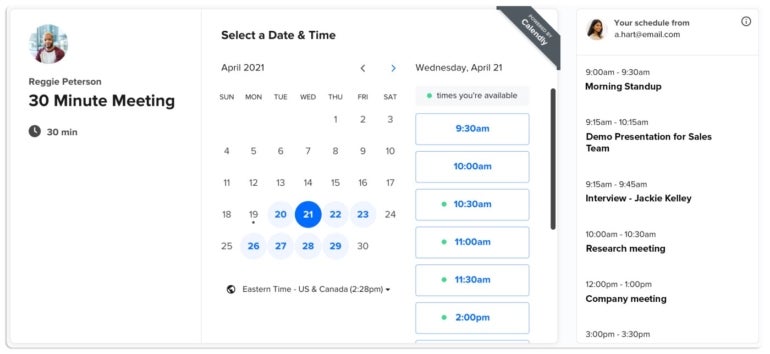
Key features
- Automated availability checks can be scheduled for up to six calendars.
- Automated distribution of meetings to your team based on availability and priority.
- Artificial intelligence to help nondata scientists prepare data and build machine learning models.
- Time zone that displays availability in each invitee’s time zone.
- Insight on invitee engagement and tracking of campaign scheduling activity.
Pros
- Integrates with Google Calendar.
- Allows you to book different meeting types.
- Customized schedule blocking.
- Automatically creates Zoom meetings.
- Simple canceling and rescheduling.
Cons
- Multiuser scheduling isn’t intuitive.
- Basic plan is very limited.
- The mobile app isn’t user friendly.
Pricing
- Basic: Free.
- Essentials: $8 per seat per month, billed annually, or $10 per seat billed monthly.
- Professional: $12 per seat per month, billed annually, or $15 per seat billed monthly.
- Teams: $16 per seat per month, billed annually, or $20 per seat billed monthly.
SEE: Compare Calendly to our list of the top appointment scheduling software for small businesses.
WalkMe: Best for digital adoption
WalkMe provides companies with a starting point to plan and implement digital collaboration options. This digital adoption platform can help your company plan its digital adoption strategy based on actual user data. By analyzing and isolating business-critical applications, companies can optimize digital experiences and create customizations across applications and business processes. WalkMe increases visibility and clarity for leaders and helps overcome unique business challenges (Figure B).
Figure B
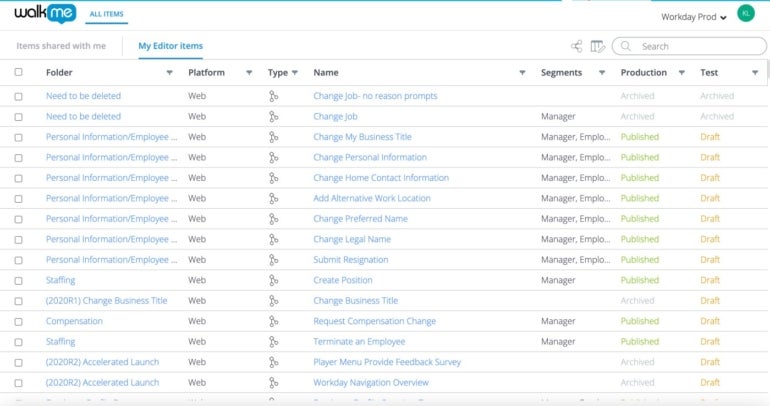
Key features
- No coding required for nontechnical users.
- Data import, export and synchronization.
- Access to conversion optimization tools.
- Process automation to simplify digital adoption.
- SOC 3 enterprise-level security.
Pros
- Highly customizable.
- Easy to create custom tutorials.
- Allows deep integration into your company website.
- Multistep guided experience for users.
Cons
- Some platform incompatibility.
- Mobile is an added cost.
- Some learning curve.
Pricing
For pricing details, request a quote from WalkMe.
Slack: Best for digital collaboration
Slack is a digital team collaboration tool that makes it easy for teams to come together and collaborate in real time using channels that house all project-related team activities and communications. Everyone within a channel can access the same messages, allowing them to all stay on the same page (Figure C). Teams can share ideas, make decisions and make progress with a common purpose and place.
Figure C
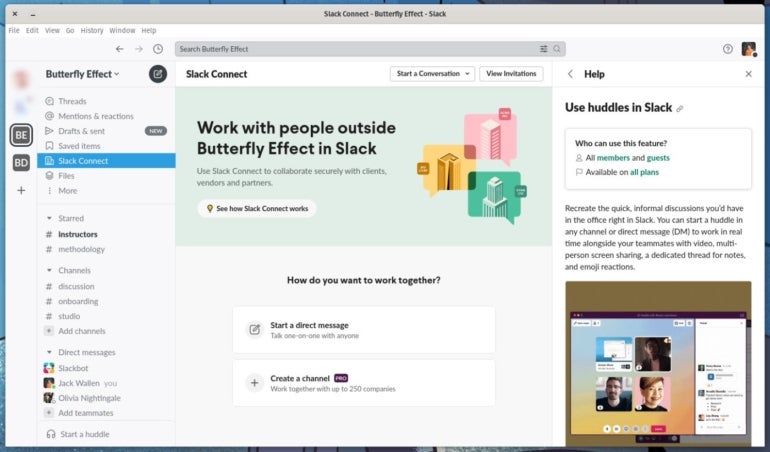
Key features
- Stop, Stick and Roll features.
- Slack Connect works with multiple organizations within a channel.
- Messaging to allow private chat with team members.
- Video conferencing for sharing information face-to-face and more efficiently.
- Historical data that is searchable.
Pros
- Powerful collaboration tools.
- Workspaces and channels make for easy teamwork.
- Numerous third-party integrations.
- Slackbot simplifies automation.
- File archives and searching.
Cons
- Video share isn’t always reliable.
- Busy channels can get overwhelming without using filters.
- Users are randomly signed out of workspaces.
Pricing
- Free.
- Pro: $7.25 per person per month, billed annually, or $8.75 per person billed monthly.
- Business+: $12.50 per person per month, billed annually, or $15 per person billed monthly.
- Enterprise Grid: Contact sales.
SEE: Explore our smart person’s guide to Slack.
Google Workspace: Best for productivity
Previously known as G Suite, Google Workspace offers companies a web-based suite of business productivity and collaboration tools for companies of all sizes. It combines custom email for businesses and other collaboration tools like Gmail, Calendar, Meet, Chat, Drive, Docs, Sheets, Slides, Forms and other apps (Figure D).
Figure D
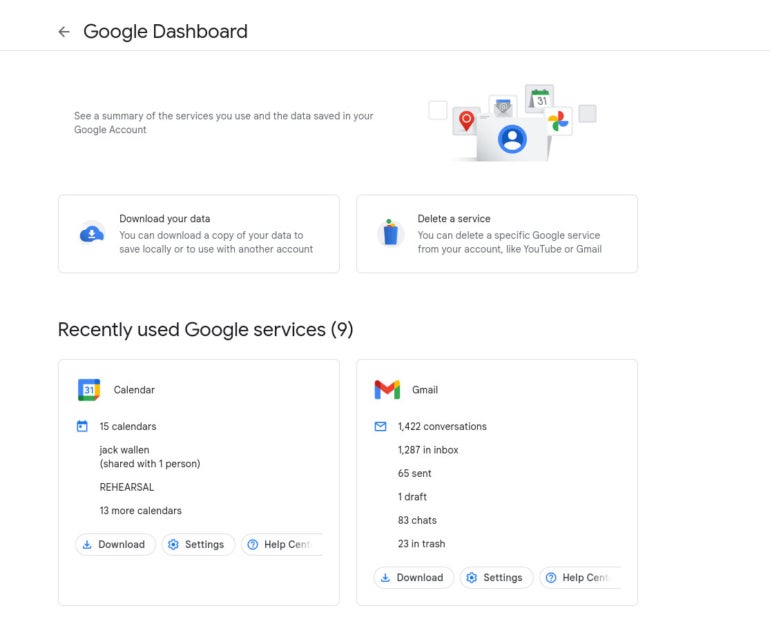
Key features
- Custom and secure business email.
- Video meetings from 100 participants, up to 250+ participants with recordings.
- From 30GB cloud storage per user up to unlimited storage.
- Security and management controls.
- Product support.
Pros
- Plenty of third-party integration.
- Secure email.
- Domain alignment.
- Anti-spam tools.
- Plenty of cloud storage.
- Easy account creation.
- Built-in collaboration tools.
- Mobile apps.
Cons
- Complicated data migration tools.
- Limited desktop apps.
- Contacts app lacks customization.
- Tasks app is limited in functionality.
- Limited chat integrations and options.
- Google Dashboard is limited and cannot be customized.
Pricing
- Free.
- Business Starter: $6 per user per month, billed annually, or $7.20 per user billed monthly.
- Business Standard: $12 per user per month, billed annually, or $14.40 per user billed monthly.
- Business Plus: $18 per user per month, billed annually, or $21.60 per user billed monthly.
- Enterprise: Contact Sales.
SEE: Check out our Google Workspace cheat sheet.
Zoom: Best for team meetings
Zoom meetings provide teams with access to an online high definition video and audio collaboration solution that lets groups of all sizes collaborate inside and outside of your organization. Meetings can be synchronized with your calendar system to deliver enterprise-grade video conferencing from your computer or mobile device (Figure E). Zoom also offers robust security and disruption-free settings.
Figure E
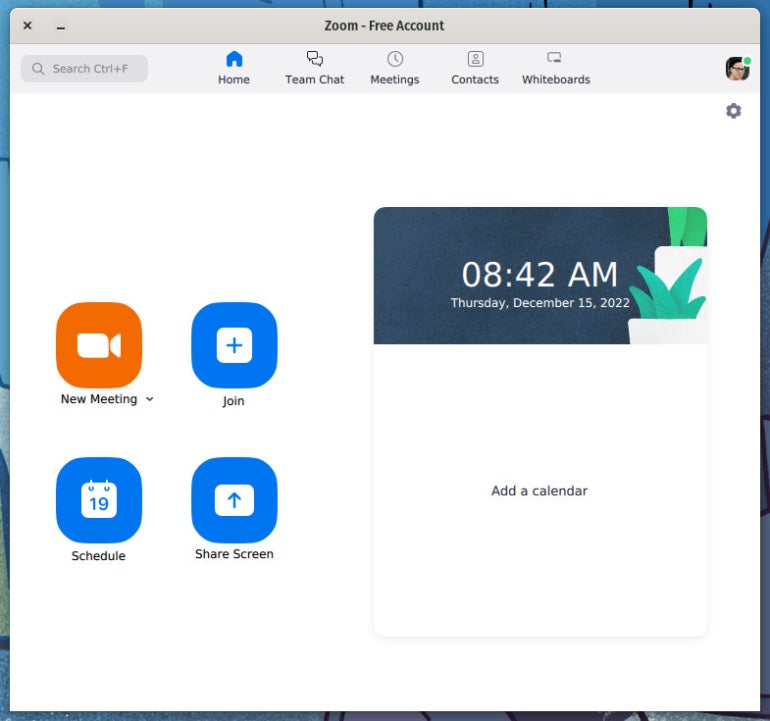
Key features
- Encryption, role-based security, passcode protection, waiting rooms and more.
- Recording and transcripts can be saved locally or to the cloud, with searchable transcripts.
- Streamlined calendaring that syncs with Outlook, Gmail or iCal.
- Team Chat with searchable history, integrated file sharing.
Pros
- Supports large audiences.
- Meetings can be streamed on Facebook.
- Can be used for free, with limitations.
- Google Calendar integration.
- Scalable from small to enterprise businesses.
- Cross-platform applications.
- HD for video and audio.
- HIPAA compliant.
Cons
- Can be pricey when at scale.
- No comment control.
- App is required for use.
- Saved recording file size can grow very large.
Pricing
- Basic: Free.
- Pro: $149.90 per user per year, or $15.99 per user, billed monthly.
- Business: $199.90 per user per year, or $19.99 per user, billed monthly.
- Business Plus: $250.00 per user per year, or $25.50 per used, billed monthly.
- Enterprise: Contact sales.
SEE: Explore our Zoom cheat sheet.
Source of Article



